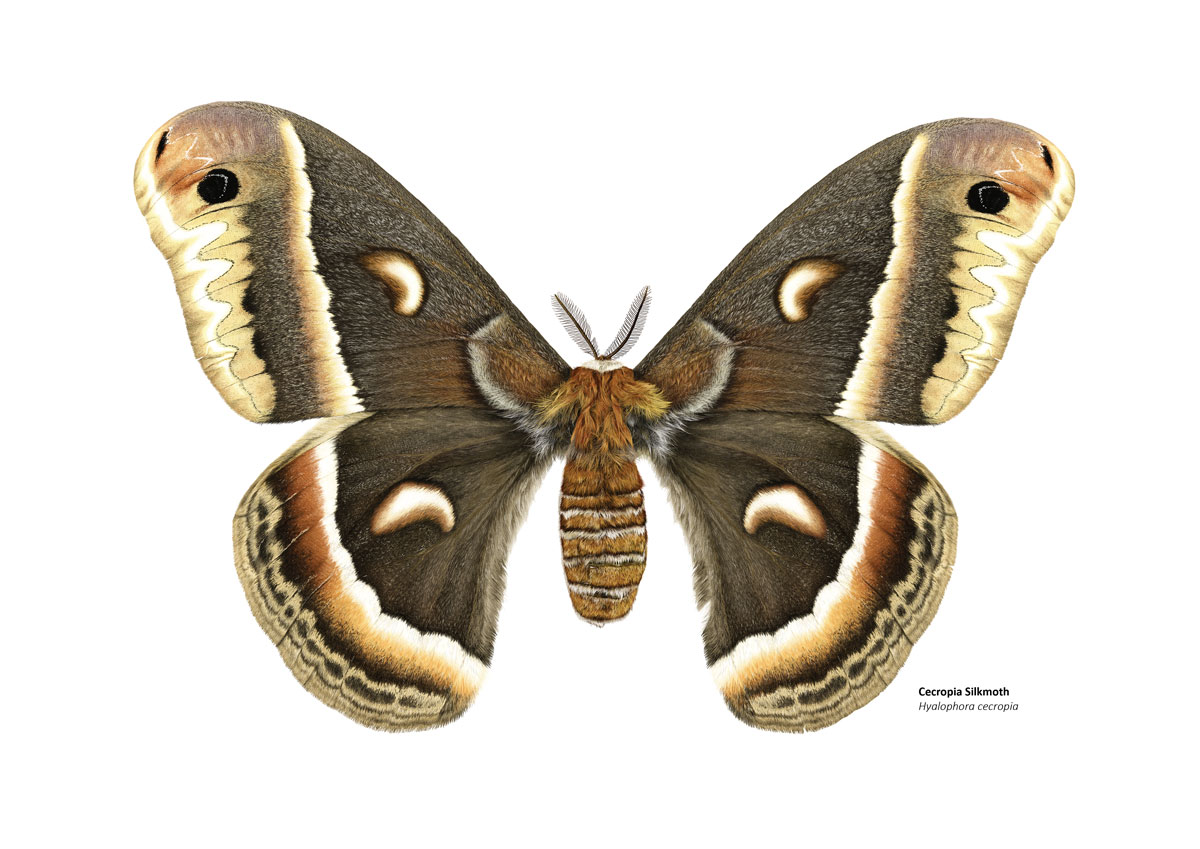Hyalophora cecropia

| Distribution: | North America |
| Size: | 130 – 180mm wingspan |
| Diet: | Ash, birch, box elder, alder, elm, maple, poplar, cherry, plum, willow, apple, & lilac leaves (caterpillar) Nothing (adult moth) |
These large beautiful moths spend the majority of their lives as caterpillars, munching on a multitude of leaves. After emerging from its cocoon, the moth will only live for a few weeks and it has one simple purpose – to take to the skies, find a mate and procreate*. The moths dispense with anything that may get in the way of reproduction, which means no pesky digestive system and consequently no ability to eat. The sex-crazed male moths are able to detect the pheromones of females from up to a mile away using their large brush-like antennae, but bolas spiders have evolved the ability to mimic these pheromones and lure the moths to a sticky grave. This is known as aggressive chemical mimicry.
*like a teenager with a jetpack
Take a closer look…

